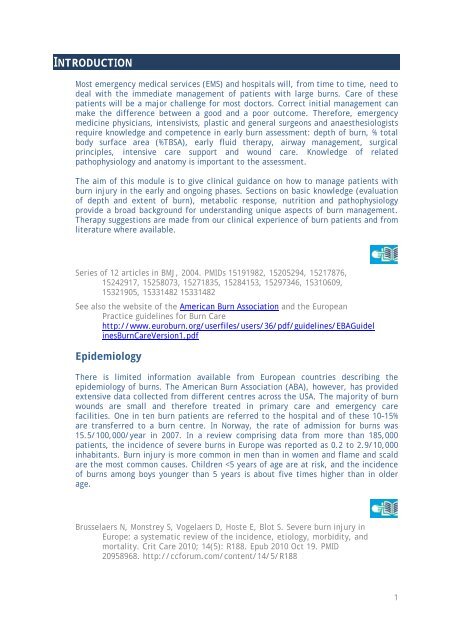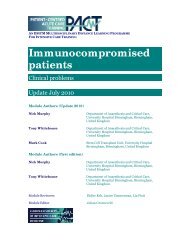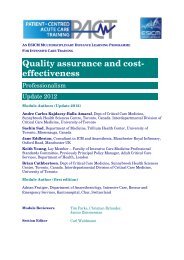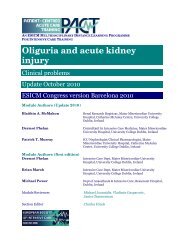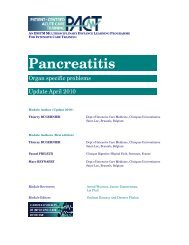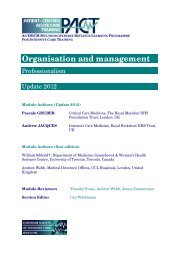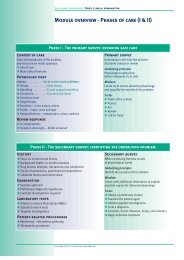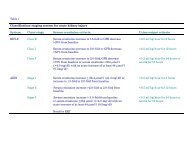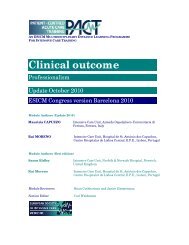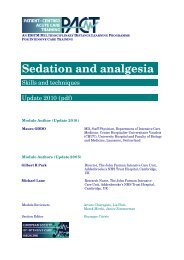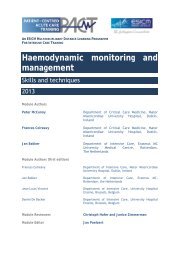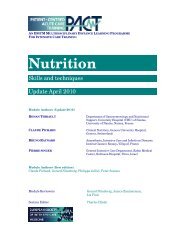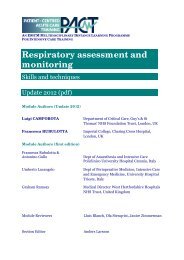Burns injury - PACT - ESICM
Burns injury - PACT - ESICM
Burns injury - PACT - ESICM
You also want an ePaper? Increase the reach of your titles
YUMPU automatically turns print PDFs into web optimized ePapers that Google loves.
INTRODUCTION<br />
Most emergency medical services (EMS) and hospitals will, from time to time, need to<br />
deal with the immediate management of patients with large burns. Care of these<br />
patients will be a major challenge for most doctors. Correct initial management can<br />
make the difference between a good and a poor outcome. Therefore, emergency<br />
medicine physicians, intensivists, plastic and general surgeons and anaesthesiologists<br />
require knowledge and competence in early burn assessment: depth of burn, % total<br />
body surface area (%TBSA), early fluid therapy, airway management, surgical<br />
principles, intensive care support and wound care. Knowledge of related<br />
pathophysiology and anatomy is important to the assessment.<br />
The aim of this module is to give clinical guidance on how to manage patients with<br />
burn <strong>injury</strong> in the early and ongoing phases. Sections on basic knowledge (evaluation<br />
of depth and extent of burn), metabolic response, nutrition and pathophysiology<br />
provide a broad background for understanding unique aspects of burn management.<br />
Therapy suggestions are made from our clinical experience of burn patients and from<br />
literature where available.<br />
Series of 12 articles in BMJ, 2004. PMIDs 15191982, 15205294, 15217876,<br />
15242917, 15258073, 15271835, 15284153, 15297346, 15310609,<br />
15321905, 15331482 15331482<br />
See also the website of the American Burn Association and the European<br />
Practice guidelines for Burn Care<br />
http://www.euroburn.org/userfiles/users/36/pdf/guidelines/EBAGuidel<br />
inesBurnCareVersion1.pdf<br />
Epidemiology<br />
There is limited information available from European countries describing the<br />
epidemiology of burns. The American Burn Association (ABA), however, has provided<br />
extensive data collected from different centres across the USA. The majority of burn<br />
wounds are small and therefore treated in primary care and emergency care<br />
facilities. One in ten burn patients are referred to the hospital and of these 10–15%<br />
are transferred to a burn centre. In Norway, the rate of admission for burns was<br />
15.5/100,000/year in 2007. In a review comprising data from more than 185,000<br />
patients, the incidence of severe burns in Europe was reported as 0.2 to 2.9/10,000<br />
inhabitants. Burn <strong>injury</strong> is more common in men than in women and flame and scald<br />
are the most common causes. Children


